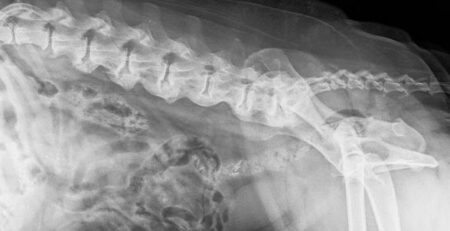Table of Contents
Epilepsy in dogs and cats: is a neurological disorder characterized by seizures.
A seizure represents the manifestation of excessive electrical activity of brain neurons that suddenly “go crazy.”
This involves the transient appearance of signs that may consist of brief episodes with seizures or focal motor or behavioral changes.
The forms of epilepsy in dogs and cats are identified in four categories:
- Primary or idiopathic: the origin remains unknown and is leaning toward genetic
- Symptomatic: an identifiable structural lesion is present in the brain
- Probable symptomatic: there is believed to be a structural lesion of the encephalon that is not identifiable
- reactive: due to metabolic or toxic diseases
How seizures occur in dogs and cats
Seizures in dogs and cats can manifest as:
- Focal seizures: manifested as spasms of the facial muscles, with attempts to try to bite the base of the tail by rapidly rotating in circles and spasms of the neck
- generalized: characterized, from the beginning, by the involvement of both cerebral hemispheres and thus both sides of the body. Typical symptoms are pedaling of the fore and hind limbs, tremors, loss of consciousness, excessive salivation, loss of sphincter control resulting in bladder and fecal incontinence
- Focal with secondary generalization: spasms spread to the whole body
- Cluster seizures: seizures occur less than 24 hours apart, within a few hours of each other
- status epilepticus or status epilepticus malus: when the seizure (generalized or focal) is prolonged for more than 20 minutes or if seizures are repeated at very short intervals (less than one minute) such that they represent a continuous epileptic condition.
Epileptic cat and dog: accurate observation and description of seizures
In order to arrive at the most certain diagnosis of dog or cat epilepsy possible, a series of assessments must be made that include the animal’s medical history:
- Environmental to assess the presence of toxic substances with which the animal may have come into contact such as lead in paints, mothballs, metaldehyde in snail poisons, and insecticides in general
- physiological to learn about the animal’s vaccinations and diet or any metabolic dysfunction. Inflammatory and infectious diseases can affect animals of any age, but nutritional imbalances can also trigger neurological symptoms.
- pathology to detect prior trauma or congenital structural conditions such as hydrocephaly.
It is essential that the owner report the number of observed episodes to the Veterinarian with the utmost accuracy in describing them.
Based on this information, the veterinarian will proceed with the diagnostic process to identify the underlying causes of seizures.
Diagnostic tests, diagnosis by exclusion
Blood and urine tests first allow us to rule out that the seizure episodes are not caused by an underlying metabolic disorder.
Intoxication, hypoglycemic states, liver dysfunction, and alterations in calcium, potassium, and sodium levels in the animal’s body are also triggers of canine and feline epilepsy.
Neurological examination, CT and/or MRI scans in cases where primary diseases that may cause seizures are to be ruled out complete the diagnostic process to finally assess the presence of congenital abnormalities or neoplasms in the brain.
Therapy and treatment
Treatment will be symptomatic i.e., aimed at counteracting the pathophysiological mechanisms, where identified, that cause epilepsy in dogs and cats.
In cases of idiopathic epilepsy, that is, when the cause remains unknown, antiepileptic drug treatment aims to reduce seizures and safeguard the animal’s quality of life.
Management is long-term and usually therapy should be administered throughout the animal’s lifetime.
How to help your pet during a seizure: here’s what to do
Seizures in dogs and cats cause anxiety and panic, and it is important to know how to deal with them.
Move away all dangerous objects that could injure the animal; smash some pillows to prevent it from injuring itself or hurting itself by falling on itself or banging violently against walls, floors and edges.
Avoid touching and shaking him because unintentionally he may bite or scratch, do not scream and keep calm.
Most importantly, contact your trusted veterinarian immediately to report what happened and wait until the animal has calmed down to take it in for examination.
How long does a dog or cat who suffers from seizures live
Tracing the source of the problem allows the veterinarian to take action to solve it.
In order to live with this unpredictable condition, early diagnosis and initiation of appropriate treatment certainly help epileptic cats and dogs to lead a nearly normal and qualitatively satisfying life.
To refer your dog or cat for a checkup, contact the veterinary doctors on our staff who are always available to you.
We would also like to remind you that Clinica La Veterinaria is always open h24 every day including holidays and with First Aid service from 8 pm to 8 am.










